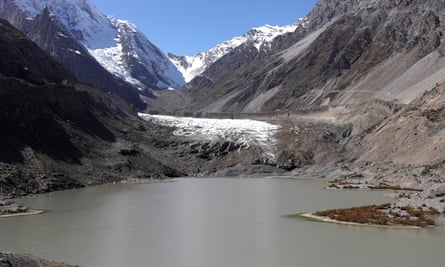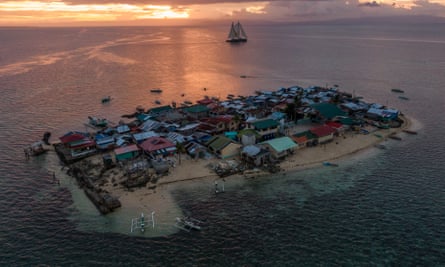It has been another catastrophic climate year, with supercharged extreme weather events striking every corner of the globe: the deadliest-ever Mediterranean cyclone dropping unprecedented rainfall in Libya, severe drought threatening Indigenous communities and ecosystems in the Amazon, and a surge in heat deaths in Phoenix, Arizona.
Record-breaking global temperatures have played a major role in this summer’s epic ocean storms, wildfires, flooding and droughts, so it is a perverse reality that the countries and communities which have contributed least to the greenhouse gases warming the planet are suffering the most – and are least equipped to cope with the escalating death and destruction.
What is loss and damage?
Loss and damage refers to the irreversible costs of extreme weather and slow-onset disasters such as sea level rise, ocean acidification and melting glaciers caused by global heating. It is about holding the biggest fossil fuel polluters liable for the pain and suffering already caused by climate breakdown. Climate finance for loss and damage is considered separately, and in addition to, securing funds for mitigation and adaptation to help developing nations prepare for what is coming.

Costs can be both economic – resulting from lost lives, livelihoods, infrastructure, homes and territory – and non-economic and harder to quantify, such as lost culture, identity, biodiversity and sovereignty, among others. The demand for loss and damage funds has become a central tenet in demands for climate justice. In other words, people are demanding climate action that addresses the inequities behind the cause and effect of the climate breakdown.
Where are we?
For more than 30 years, developed rich countries have used an array of tactics to block loss and damage funding to the most affected – and least responsible – nations. Finally, last year at the Cop27 summit in Egypt, there was a formal agreement to establish a new, broad fund and funding arrangements.
The victory was thanks in large part to the Egyptian Cop27 presidency and unwavering pressure from the G77 block of developing countries (plus China) led by Pakistan, where unprecedented floods had left a third of the country under water. But agreeing to set up the fund was just the first step.
What’s happened since Cop27?
A transitional committee was tasked with creating a set of recommendations about what the loss and damage fund should look like and how it will function. After a year of testy negotiations in which developed nations sought to minimise their contributions while maximising control over who benefits, both rich and poor nations were forced to make major compromises.
For instance, the final package of recommendations for countries to consider at Cop28 includes the World Bank temporarily hosting the new fund – something which developing countries were steadfastly against. In the end, the US, EU and other rich nations got their way, but only after developing countries secured crucial conditions such as direct access for countries, communities and Indigenous people and a level of transparency that the World Bank is unaccustomed to.

Another key battle was over eligibility, and rich countries tried – but ultimately failed – to limit access only to countries classed as small island developing states and the UN list of least developed countries, a move which would have excluded vulnerable countries such as Pakistan, Colombia and the Philippines.
after newsletter promotion
Will there be new money for loss and damage?
The transition committee’s recommendations do not include mention of scale or startup funding, so it has yet to be decided how much money will be available. It’s also unclear who will contribu


